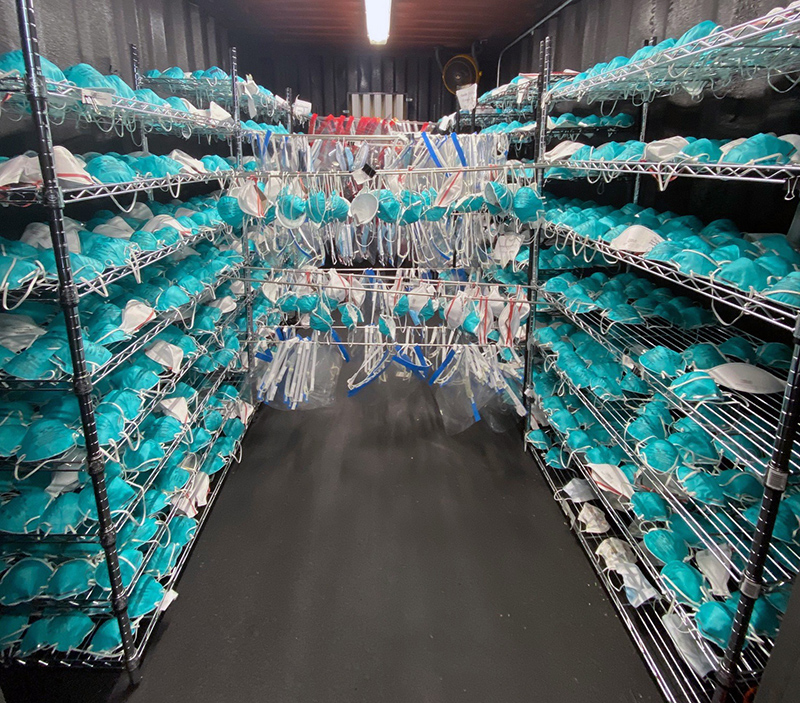Volume 23 | Issue 2
Click here to read the complete illustrated article as originally published or continue below to read the text article.
In partnership with the FDA in 2015-2016, we had explored how we could decontaminate PPE in the event of a pandemic situation and resulting PPE shortage. It’s the type of question we hoped we never had to ask ourselves, but when the time came, we had an answer.
Based on our research, we at Battelle—an R&D nonprofit based in Columbus, Ohio—repurposed shipping containers as decontamination chambers for PPE, specifically starting with N95 respirator masks. We built a prototype within a matter of days once the idea had been raised, and in that prototype we used vapor phase hydrogen peroxide (VPHP) circulated through the chamber where it saturates the atmosphere and condenses on N95 masks.

Masks inside a decontamination chamber.
Exposing N95 masks to this process for over two hours was shown to decontaminate SARS COV-2 from the masks without degrading filter performance or the elastic strap that holds the mask in place up to 20 repeat cycles. Once we knew it worked, we set out to scale up production immediately.
Our team worked tirelessly to bring these Critical Care Decontamination SystemsTM (CCDS) into operations within a matter of weeks, as COVID-19 cases skyrocketed throughout the country. With FDA emergency approval in place, we were able to begin decontamination at our Central Ohio location as well as send systems to New York, Washington State, Boston and other hard-hit areas. The systems are able to decontaminate up to 80,000 masks a day, so we mobilized to build and deploy multiple systems while also training the staff needed to carry out this vital process.
The reuse of N95 masks is new for hospitals and healthcare systems—these PPE are typically thrown away after one use, so we worked with our healthcare partners to put systems in place to bag and ship used masks to our units. Once onsite, we barcode each shipment with a unique code so that masks are tracked and returned to their original hospital.
In a month from the initial concept we had CCDS units deployed across the country and a federal contract in place to develop up to 60 systems. Although the shortage of PPE is a larger issue requiring a robust response, our solutions have acted as a key stopgap measure to provide safety and support for our frontline healthcare workers and the patients they’re treating.

Will Richter
Will Richter, Principal Research Scientist, Battelle
Principle Research Scientist at Battelle with 18 years of high containment biosafety level 3 microbiology experience, specializing in biological warfare agent identification, persistence, and decontamination. richterwr@battelle.org
In this episode, I sit down with Chris LaCorata, founder of Graasi, to explore his entrepreneurial journey and the story behind creating a brand centered on health, sustainability, and innovation. Chris shares the inspiration that led him to launch Graasi, how he’s navigating today’s competitive beverage market, and the values driving his vision for the future. Whether you’re interested in wellness trends, startup challenges, or the creative spark behind building a purpose-driven company, this conversation offers fresh insights straight from the founder himself.